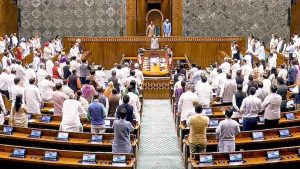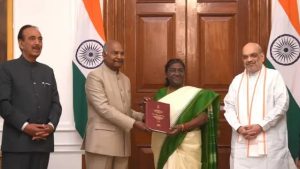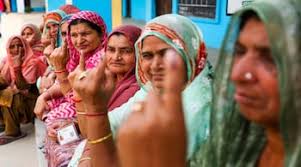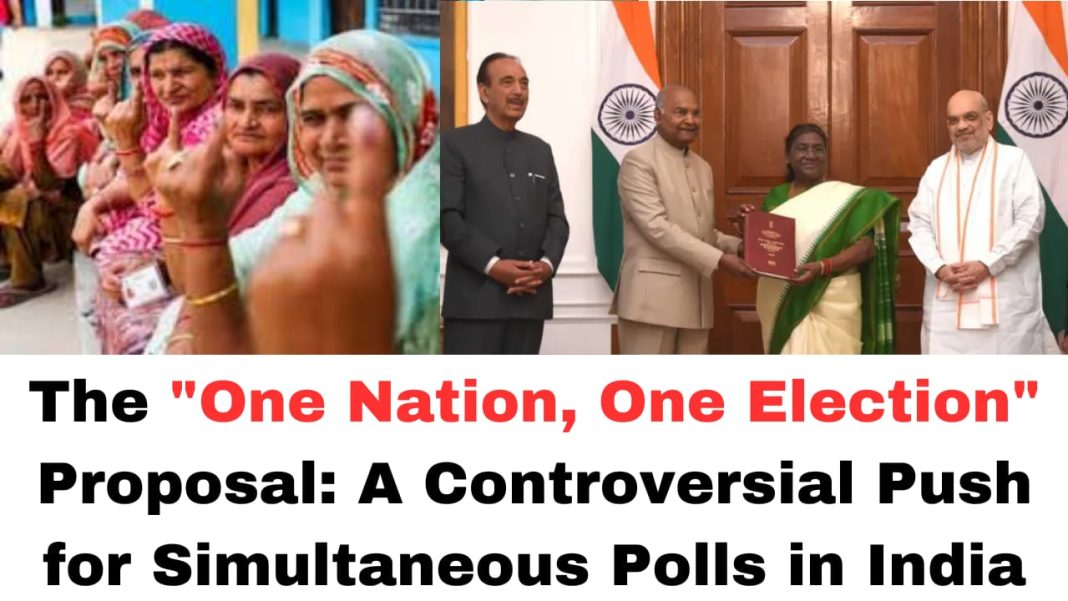Digital News Guru Political Desk:
India’s political landscape is abuzz with debates surrounding the Bharatiya Janata Party’s (BJP) proposal for “One Nation, One Election,” an ambitious plan to synchronize federal and state elections across the country. The proposal aims to consolidate polling schedules to streamline the electoral process, reduce administrative costs, and mitigate voter fatigue. However, it has sparked heated discussions among political parties, constitutional experts, and civil society, raising questions about its feasibility, implications, and impact on India’s democratic framework.
What is “One Nation, One Election”?
The concept of “One Nation, One Election” (ONOE) proposes simultaneous elections for the Lok Sabha (House of the People) and all State Legislative Assemblies. Currently, elections in India are staggered, with states and the central government holding polls at different intervals. This system results in a near-constant state of electoral activity, often referred to as India’s “perpetual election cycle.”

Under ONOE, elections would occur once every five years, requiring all terms to be aligned. Proponents argue that this would reduce the logistical burden on the Election Commission of India, minimize election-related expenditure, and provide stability by ensuring a consistent focus on governance rather than continuous campaigning.
The Rationale Behind the Proposal
Prime Minister Narendra Modi and the BJP have championed ONOE as a transformative reform for India’s electoral system. The primary arguments in favor of the proposal include:
- Cost Reduction: Conducting simultaneous elections would significantly lower the financial outlay required for organizing polls, including expenses on security, personnel, and infrastructure.
- Administrative Efficiency: Aligning elections would simplify logistics, reduce the diversion of administrative resources, and streamline the deployment of security forces.
- Governance Continuity: ONOE advocates argue that the current staggered election system disrupts governance as governments shift their focus to campaigning. Simultaneous elections could ensure uninterrupted policymaking.
- Reduced Voter Fatigue: Citizens in India often face multiple elections within a short period, including local body polls. A unified election schedule could alleviate voter fatigue and enhance participation.
- Curbing Electoral Malpractices: Proponents believe that a consolidated electoral cycle would limit opportunities for manipulation and corruption that can arise from frequent elections.
Challenges and Criticisms
Despite its apparent benefits, the proposal has faced robust criticism on several grounds:
- Constitutional and Legal Hurdles: Implementing ONOE would require significant constitutional amendments. Articles 83, 85, 172, 174, and 356 of the Indian Constitution, which govern the tenure of legislatures and the imposition of President’s Rule, would need to be amended. Such changes demand broad political consensus, which remains elusive.
- Federal Concerns: India’s federal structure grants states considerable autonomy, including the right to hold elections independently. Critics argue that ONOE undermines this principle by centralizing electoral schedules, potentially eroding state sovereignty.
- Logistical Complexity: Conducting nationwide elections on a single day would require an enormous deployment of resources, including election personnel, electronic voting machines (EVMs), and security forces. Managing such an operation without hiccups could prove challenging.
- Disruption of Democratic Processes: Critics warn that aligning election cycles might necessitate either prematurely dissolving existing legislatures or extending their terms. Both scenarios could undermine the democratic mandate and destabilize the political system.
- Lack of Political Consensus: Opposition parties have largely rejected the proposal, accusing the BJP of attempting to centralize power and dilute India’s pluralistic democracy. They argue that ONOE could favor national parties at the expense of regional ones, skewing electoral outcomes.
- Potential Voter Confusion: Conducting multiple elections simultaneously might confuse voters, particularly in constituencies with overlapping candidates for state and national polls.
Expert Opinions
Legal and constitutional experts have expressed diverse views on ONOE. Some support the idea, emphasizing the potential benefits of cost savings and governance stability. Others caution against rushing into implementation without thoroughly addressing the practical and constitutional challenges.

Former Chief Election Commissioner S.Y. Quraishi has noted that while ONOE has merit, it is not a silver bullet for India’s electoral challenges. He stresses the need for careful planning, consensus-building, and gradual implementation to avoid disrupting the democratic process.
Historical Precedent
Simultaneous elections are not a new concept in India. Between 1952 and 1967, Lok Sabha and state assembly elections were held together. However, this synchronization was disrupted due to premature dissolutions of state assemblies and the Lok Sabha in subsequent years.
Restoring the system would require addressing the structural issues that led to its breakdown, including mechanisms to handle mid-term dissolutions without derailing the electoral cycle.
Political Reactions
The BJP has positioned ONOE as a bold reform aimed at strengthening Indian democracy. Prime Minister Modi has repeatedly emphasized its potential to transform governance and streamline India’s political processes. The party has formed a committee of experts to examine the proposal and draft a detailed roadmap.
Opposition parties, however, remain skeptical. The Congress party has dismissed ONOE as an undemocratic idea designed to favor the ruling party. Regional parties like the Trinamool Congress (TMC) and the Dravida Munnetra Kazhagam (DMK) have expressed concerns about the erosion of federalism and the marginalization of regional voices.
Public Opinion
The proposal has garnered mixed reactions from the public. While some citizens appreciate the potential for cost savings and reduced political disruptions, others worry about the practical implications and the concentration of power.
Polls conducted by media organizations have shown divided opinions, with younger voters more likely to support the idea compared to older demographics. However, most respondents agree on the need for broader consultation before implementing such a significant change.
The Way Forward
For ONOE to succeed, it must overcome formidable legal, logistical, and political obstacles. Building consensus among political parties, addressing federal concerns, and ensuring constitutional compliance are essential steps.
One potential pathway is a phased implementation, starting with aligning elections in a few states as a pilot project. This approach would allow policymakers to identify and resolve challenges before scaling up the initiative nationwide.
The Election Commission of India (ECI) would play a critical role in this process, providing technical expertise and ensuring that the electoral process remains free, fair, and transparent.

Conclusion
The “One Nation, One Election” proposal represents a bold vision for transforming India’s electoral system. While its potential benefits are significant, so are the challenges it poses. The debate surrounding ONOE underscores the complexities of balancing efficiency with democratic values in a diverse and federal polity like India.
As discussions continue, it is imperative that all stakeholders—political parties, constitutional experts, and civil society—engage in constructive dialogue to determine the best path forward. Whatever the outcome, the process must uphold the principles of democracy, federalism, and inclusivity that lie at the heart of India’s Constitution.
You May Also Read: Starlink’s Inactivity in India: Challenges and Controversies








